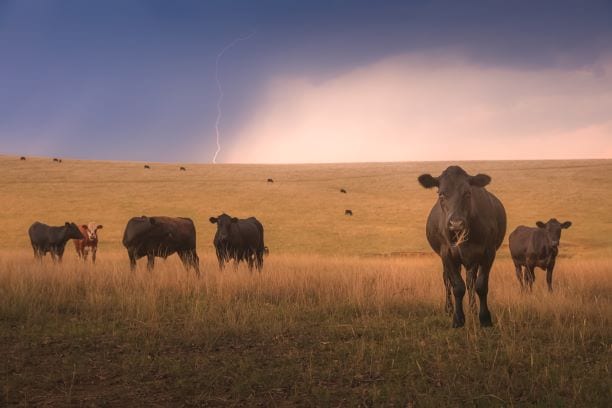For Immediate Release: May 6, 2021
Contact: R-CALF USA CEO Bill Bullard
Phone: 406-252-2516; r-calfusa@r-calfusa.com
Billings, Mont. – The live cattle supply chain from which beef is produced is multi-segmented. The largest and most widespread segment – in terms of number of market participants – are cow/calf producers that maintains mother cows and produces new calves each year. The next largest segment by market participants is the yearling segment in which cattle farmers and ranchers prepare yearling-age cattle for the final and smallest segment by volume of producers, the feeding segment. This last segment feeds cattle to harvest weight and sells them directly to the beef packer that produces beef. Though they are few, some ranchers are involved in all segments and sell beef directly to consumers.
For the past six years the cattle market has been erratic, marked by falling cattle prices while wholesale and retail beef prices have climbed to historically high levels.
The brunt of the market’s chronic dysfunction has impacted the smallest segment the most – the feeding segment that sells directly to the beef packer. The larger segments of cow/calf producers and yearling operators, though their prices have also fallen, have been somewhat insulated from the more severe market shocks experienced by cattle feeders.
According to R-CALF USA leaders, that is about to change. Escalating corn prices mean the cost of feeding cattle has increased significantly and cattle feeders who are already suffering severe losses due to the erratic fed cattle market will likely need to buy their inputs at a much lower price to stay in business, by offering less to cow/calf producers and yearling operators for their cattle.
“This could be the perfect storm,” said Kansas rancher and R-CALF USA board member Kyle Hemmert, adding, “The severe market shocks that cattle feeders have been experiencing for years are about to be pushed to cow/calf producers and yearling operators in the form of much lower prices.”
Iowa cattle feeder and R-CALF USA board member Eric Nelson agrees with Hemmert and explains there are two classes of cattle feeders: the majority who sell cattle in the open market or contracts linked to open market prices, and the minority insulated from the open market through some type of cost-sharing arrangements with the beef packers.
“It is the family-sized independent cattle feeder that is most impacted by the depressed market. If cattle feeders with cost-sharing arrangements hold lighter-weight cattle prices above what rising feed costs can support, then we will lose an untold number of independent cattle feeders from our industry. And, if lighter-weight cattle prices are not held up, then cow/calf and yearling operators will experience the full wrath of the dysfunctional market.”
South Dakota cow calf, yearling, cattle feeder and R-CALF USA director Brett Kenzy said the outcome of either of these scenarios could wipe out large segments of the domestic live cattle supply chain. He also explained that it is becoming increasingly difficult for independent cattle feeders to obtain credit without price protection through hedging, which itself is difficult when fed cattle prices persist in moving opposite the direction that market fundamentals would suggest.
“If we lose more independent cattle feeders because the cost-sharing feedlots hold lighter-weight cattle prices up, then cow/calf producers and yearling operators will soon have too few buyers to maintain a competitive industry. But if lighter-weight cattle prices are not held above what the current dysfunctional market conditions will support, we’ll soon drive many cattle farmers and ranchers out of business.”
“We can’t fix this ourselves,” Kenzy added. “Congress or the Department of Justice must step in to immediately fix the broken fed cattle market because that’s the market that drives our entire industry.”
R-CALF USA is supporting what it calls two triage measures: The swift passage of the Grassley/Tester bill (S.949) that will restore competition in the fed cattle market by requiring packers to purchase at least 50% of their cattle in the open cash market and the reinstatement of mandatory country of origin labeling for beef to restore competition for beef produced from U.S. cattle.
# # #
R-CALF USA (Ranchers-Cattlemen Action Legal Fund United Stockgrowers of America) is the largest producer-only lobbying and trade association representing U.S. cattle producers. It is a national, nonprofit organization dedicated to ensuring the continued profitability and viability of the U.S. cattle industry. Visit www.r-calfusa.com or, call 406-252-2516 for more information.






